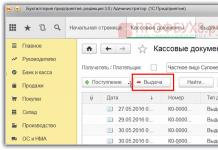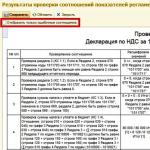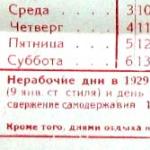With the development of the idea of energy saving, alternative building materials, in particular wall blocks. For the construction of walls, foam blocks and gas blocks, which are types of cellular concrete, are increasingly used.
Their main similarity is their porous structure, which helps improve performance characteristics in comparison with classic ceramic bricks.
Foam concrete block - artificial stone with a porous structure, consisting of sand, cement, water and a synthetic foaming agent.
An aerated concrete block is a cellular artificial stone consisting of cement, quartz sand, a gas-forming agent (aluminum paste or suspension), water, gypsum or lime.
1. Foam block and gas block: what is the difference?
Already from short definition concepts, one can notice that, despite their similar composition, the materials have significant differences in manufacturing technology. Hence the completely different structure of internal pores.

A comparative analysis of key parameters is presented in the table:
| Options | Foam block | Gas block |
| Cellular structure | has closed pores, providing excellent heat and sound insulation | has a fine-cellular structure with microcracks after the release of gas, allowing the material to “breathe” |
| Production technology | a) mechanical mixing of components and foaming agent - difficulty in obtaining a structure uniform in density; b) drying and strengthening under natural conditions. |
a) interaction of components through a chemical reaction - the ability to control the process; b) drying takes place in autoclaves under elevated pressure and temperature. |
| Visual perception | A) gray shade;
b) smooth surface; c) when split, large pores are visible; d) when immersed in water, the fragment remains on the surface. |
A) white;
b) surface with roughness; c) when a pore splits with a diameter of less than 1 mm; d) a fragment in a container of water quickly sinks to the bottom. |
There is an opinion about the difference in the geometry of the blocks, which is not always true. More often they compare materials made in different ways. So, if we compare foam blocks produced by the cassette method (molded) with cut gas blocks, then the former will be inferior in dimensional accuracy. The cassette method is common in small handicraft factories. On large production apply high technology, allowing the accuracy of the parameters to be maintained regardless of the type of material.
There are no differences in environmental safety. The base uses natural materials, and chemical reagents either disintegrate during the reaction or become non-toxic.
2. What are the sizes of foam concrete and aerated concrete blocks?
Construction of walls and internal partitions from blocks accelerates, in part, due to the comparatively large size units of building material. Increase geometric parameters, relative to classic brick, was made possible by reducing the weight of the porous material. But even here there are limits, regulated by GOST: maximum size one foam block in mm is 625x500x500.

Foam is in demand on the market concrete blocks length 600 mm, height 200 and 300 mm, thickness 100 (for partitions), 200 and 300 mm. The exact dimensions are specified in GOST. Enterprises producing cut blocks have the opportunity to fulfill orders with individual requirements by size.
Aerated blocks are in demand in the following sizes: length 600 or 625 mm, height 200 or 250 mm, thickness 100, 150, 200, 250, 300, 350 and 400 mm.
For cheap production of blocks, the cassette method is used, in which the concrete mixture is poured into a mold with partitions. With this method, the deviation in size can be up to 5 mm.
When choosing suitable option the height and length are compared with the perimeter of the wall being built for ease of laying, and the thickness directly depends on the load and the required level of thermal insulation.
3. How much do foam blocks and gas blocks cost?
The cost of building materials is an important argument in favor of one type or another. Especially when it comes to similar technical characteristics. But you need to understand what to compare. There will be a strong price imbalance when comparing products different quality. Homemade foam blocks using outdated technology will be noticeably cheaper than gas blocks from a factory with advanced equipment. But this approach will not be beneficial, since saving means losing quality.

Let's analyze the price of certified products from large manufacturers with a good reputation. The price of blocks depends on the brand of strength and size.
In Moscow and the Moscow region, the cost of one wall foam block of the D600 brand and size 600x300x200 different manufacturers ranges from 100-115 to 160 rubles. At the same time, 1 m 3 costs 2900-3750 rubles.

The price for thermal insulation and structural aerated concrete wall blocks of the D500 brand and size 600x300x200 in Moscow and the region starts from 110-112 rubles. per piece, and the upper limit is at around 167-175 rubles. per piece 1 m3 holds 27.8 blocks, respectively average price 1 m 3 of gas blocks is 3058-3700 rubles.
The price of blocks in remote regions (Siberia, Far East), like other building materials, will be on average 1.5 times higher than in Central region. In addition, during construction, thicker walls need to be laid to increase thermal insulation.
The budget also needs to include the cost of masonry services. On average, 1 m 2 of wall made of cellular blocks costs 1500-1700 rubles. The price list of contracting organizations indicates the cost per cubic meter, which varies from 2,400 to 4,000 rubles.
4. Technical characteristics: which is warmer and more durable?
Specific technical specifications available in the product card on the manufacturer’s website or in the accompanying document for the supplied batch. The most significant indicators are strength and the ability to maintain a comfortable temperature for living.

The structure of blocks of different densities: structural and thermal insulation (D600) and thermal insulation (D300).
The thermal insulation of cellular concrete is due to the presence of a system of pores filled with air. In terms of this indicator, closed-cell foam blocks win. But if we consider cheap option with poor geometry, requiring laying on cement mortar, then due to “cold bridges” the foam concrete wall needs additional insulation.
Aerated blocks often have exact dimensions and are laid on adhesive composition, therefore, the finished aerated concrete box creates a better microclimate (keeps warm in winter and cool in summer). If we compare walls made of foam blocks and aerated blocks with glue, then in the first case the thermal insulation will be better.
The strength of a material depends on density, and density has a negative effect on thermal insulation (the higher the density, the higher the thermal conductivity). Based on the density kg/m3, the blocks are divided according to their purpose: thermal insulation D300, D400, D500; structural and thermal insulation grades D600, D700, D800 and structural grades D900 and higher.
When comparing aerated concrete and foam concrete of the same strength grade, the former will have a lower density. Autoclave production technology ensures high strength blocks.
In relation to moisture, gas blocks with open pores and a rough surface are comparable to a sponge. In areas with frequent floods, aerated concrete houses are impractical and short-lived. Foam blocks are more resistant to the environment and absorb water more slowly when immersed in it. The water absorption of foam concrete is half that of aerated concrete. However, the porous structure of the material, one way or another, requires moisture protection.
5. What are the main pros and cons of foam blocks and gas blocks?
The general pros and cons of wall blocks and the specific ones characteristic only of a particular type are presented in the table below.
| Pros | Cons |
| general | |
| environmental friendliness | low bearing capacity- suitable only for low-rise construction |
| light specific gravity | not suitable for storage under open air, exterior finishing is required after installation |
| ease of installation and high speed of wall construction | This means laying a major expensive foundation |
| high thermal insulation | fragility - at the slightest deformation of the foundation, the walls crack |
| needed external insulation to shift the dew point that destroys the material | |
| for foam blocks | |
| good sound insulation | gradually gain strength - masonry begins 1.5 months after manufacture |
| low thermal conductivity | gives a slight shrinkage of 2 - 3 mm |
| durability over 30 years | there is a high risk of buying low-quality material |
| fire resistance | |
| frost resistance 25 - 30 cycles | |
| for gas blocks | |
| ideal geometry - dimensional error no more than 1 mm | lower noise insulation performance |
| does not shrink | strong water absorption |
| durability over 55 years | high cost of interior finishing work |
| frost resistance 50 cycles or more | The surface of the walls must be primed twice due to the strong absorption of the composition |
On the forums you can find other comments on materials, but most of them are related to the manufacturer’s dishonesty or violations of construction technology.
6. What should foam blocks and gas blocks be placed on: glue or cement mortar?

Manufacturers of aerated blocks indicate the accuracy of the block dimensions as an advantage of their products, which allows... This method makes it possible to achieve a minimum joint thickness of 2-3 mm and high masonry strength. At the same time, laying aerated blocks on cement mortar is not allowed, since the material is taken away large number water, as a result the masonry turns out to be fragile. Glue for cellular blocks contains water-retaining additives and substances that increase the adhesion of materials.
The exception is the laying of the first row. It is carried out on cement-sand mortar 10-15 mm to compensate for uneven foundations and accurately align the blocks.
For foam blocks, laying with both mortar and glue is possible. The first option is considered budget-friendly and is used for low-quality material with poor geometry. The second is used for high-quality certified high-precision blocks.
7. What kind of foundation is needed for a house made of foam blocks or gas blocks?
In advertising materials you can find the statement that due to the low weight of the blocks, the foundation can be lightweight and low-cost. But this gross misconception can lead to irreversible consequences. Porous blocks are fragile and have low resistance to deformation, so they require a reliable monolithic foundation. But this option will not be cheap, but high costs will not always be rational.

To pick up best option in terms of reliability and price, the following factors are taken into account:
- soil properties (level groundwater, freezing depth, heaving, soil type);
- number of floors in the plan (direct relationship with the load on the foundation);
- volume and complexity of work (in some cases, an initially simple and cheap option may end up costing more than a monolithic slab).
Before starting work, collect full information about the characteristics of the soil on the building site. Errors in laying the foundation will soon be reflected large cracks on the walls.
Most often used strip foundation and monolithic reinforced concrete slab, less often a pile-screw foundation.
8. How many blocks are needed to build a house: calculation method
Correct calculation of the required number of blocks for the construction of a residential building will eliminate overexpenditures: for excess volume or for a second delivery when re-ordering.

The calculation method for a one-story house is as follows:
- calculate the perimeter of the external walls (the sum of the lengths of all sides);
- calculate the area of the walls (multiply the perimeter by the height of the floor);
- subtract area window openings and doors;
- determine the volume of masonry (multiply the resulting area by the thickness of the walls);
- calculate the quantity in pieces by dividing the volume of the masonry by the volume of one block (obtained by multiplying the length, height and thickness);
- multiply the resulting number by a loss factor of 1.05;
- similarly calculate the area of the internal load-bearing walls and partitions.
Read more about the nuances of calculation with analysis on real examples.
9. Do foam concrete and aerated concrete blocks need to be insulated, reinforced or plastered?
Despite good performance thermal insulation, porous blocks require external insulation. This is done to shift the dew point to prevent condensation from forming inside the unit. Insulation is also needed in areas with a temperate climate, when laying in two rows is impractical.

In most cases, it is necessary to pour under the mauerlat and under the ceilings in 2-3-story construction, small one-story houses and outbuildings are erected without reinforcement.
To protect against atmospheric precipitation(rain, snow and fog) the cellular material is covered with plaster. It is better to plaster aerated blocks directly onto the reinforcing mesh, as there are reviews about problems with its application. Foam blocks are also plastered to improve aesthetic qualities.
10. Which is better, foam blocks or gas blocks: popular opinion
On construction forums, these materials have their fans and opponents. The negative is often associated with the purchase of cheap, low-quality material produced using artisanal technology (moulded (cassette) foam block and non-autoclaved gas block). Experienced builders advise purchasing certified material from large manufacturers and following the technology.

Many people are alarmed by the presence of aluminum powder in their composition, so they are considered ideal for non-residential outbuildings. Due to their high hygroscopicity, gas blocks are not suitable for internal partitions in bathrooms, showers and toilets. For the same reason, they are not chosen for building a bathhouse.
For a private home the most a good option consider a combination of gas blocks and foam blocks. The first ones go to external walls, and the second - for the construction of interior partitions.
Several terms are common for building materials made of cellular concrete - aerated concrete, foam concrete, in addition there are characteristics such as autoclave and non-autoclave. Let's look at the definitions.
Cellular concrete is the general name for all lightweight concrete, which is characterized by the presence of many pores (cells) in its structure, which impart improved physical and mechanical properties to the material.
According to the method of pore formation, cellular concretes are divided into:
- Aerated concrete
- Foam concrete
According to hardening conditions, cellular concrete is divided into:
- autoclave - harden in a medium saturated steam at pressure above atmospheric;
- non-autoclaved - hardens naturally
Aerated concrete and foam concrete differ fundamentally in a number of parameters, ranging from composition to physical, technical and operational characteristics.
Production of foam concrete and aerated concrete: differences
Foam concrete is a mixture of concrete mixture and special foaming additives, which is created by mixing. The foaming agent for foam concrete can be synthetic or organic origin. When producing foam concrete, the mixture is poured into individual molds, in which, after hardening, ready-made foam blocks are obtained. Foam concrete hardens and gains strength in natural atmospheric conditions, which does not allow it to achieve the declared strength characteristics. Excess humidity also has a negative effect.
Autoclaved aerated concrete, unlike foam concrete, is produced in a factory and it consists entirely of mineral raw materials. The components for the production of aerated concrete are sand, lime, cement, gypsum, water and aluminum paste as a gas former. Pores in aerated concrete are formed by a reaction that results in the release of hydrogen, which forms pores.
Precise dosing and mixing of all components is ensured by a fully automated installation. The contents are then poured into special forms, where the mixture swells into chemical reaction. Ultimately, a mass with a large number of pores and cells is formed. Therefore, the product was called “aerated concrete”. After the array is lifted, some more time passes, after which it is sent for cutting.
The cutting of the massif is carried out using thin strings. WEHRHAHN cutting technology, which has been refined over decades, now provides cutting precision that significantly exceeds tolerance standards. This ensures the ideal geometry of the blocks and, therefore, the minimum thickness of the seams when laying aerated concrete blocks, which subsequently practically prevents the appearance of cold bridges, as well as a significant reduction in the cost of plastering smooth walls.
Aerated concrete hardens in autoclaves in an atmosphere of saturated steam at a temperature of about 180-190°C and a pressure of 12 atm. In this case, a unique crystalline structure is formed, which gives autoclaved aerated concrete its excellent properties because high strength, thermal resistance, durability, resistance to temperature differences, minimal release humidity, high vapor permeability coefficient, which distinguish it from non-autoclaved building materials.
Finished blocks and slabs are packed in shrink film and then sent to the Customer.
Quality stability
Autoclaved aerated concrete manufactured in large-scale production. Full automation and computerization production process provide guaranteed high quality products. Quality control of raw materials, semi-finished products and technological processes, including input, operational and acceptance, is carried out at all technological stages production. This is largely possible thanks to highly qualified personnel and a modern laboratory equipped with high-tech equipment that allows not only to control input raw materials, but also to produce prototypes finished products.
Manufacturing foam concrete blocks does not imply quality control of raw materials, does not have a laboratory to control the quality of finished products, in addition, violations of technology are possible. In essence, this is handicraft production with unstable quality indicators.
Strength
Foam concrete or aerated concrete manufactured in various densities. Foam concrete is significantly inferior to autoclaved aerated concrete in terms of physical and mechanical properties and strength. Moreover, given the method of producing foam concrete and the desire of manufacturers to reduce the cost of foam blocks, their cheaper analogues are often used instead of expensive foaming agents and materials. As a result, the strength indicators of foam concrete are unstable and can vary significantly depending on the different points block, while autoclaved aerated concrete is an absolutely homogeneous material with stable strength indicators throughout the entire mass.
Drying shrinkage
IN foam concrete masonry higher risk of cracks. This is due to the fact that the drying shrinkage rate, which is an important performance indicator, is significantly less than for foam concrete blocks and does not exceed 0.3 mm/m (for foam blocks this figure ranges from 1 to 3 mm/m).
Environmental friendliness
Autoclaved aerated concrete is an absolutely environmentally friendly and vapor-permeable material. Therefore, in a house made of autoclaved aerated concrete there is always a favorable microclimate for living, similar to the climate wooden house. Aerated concrete is made from mineral raw materials, therefore it is not at all susceptible to rotting, and thanks to the ability to regulate air humidity in the room, the likelihood of fungi and mold appearing on it is completely eliminated.
Foam concrete can be made using local raw materials, ash, waste from crushed stone production, in addition, chemical additives are used as foaming agents, which undoubtedly reduces the environmental friendliness of a house made of foam concrete.
Geometry
Accuracy geometric dimensions autoclaved aerated concrete blocks regulated by GOST, permissible deviations are up to 3 mm in length, up to 2 mm in width, up to 1 mm in thickness, while for foam blocks deviations in geometric dimensions can reach up to 20 mm.
Geometry violation foam blocks are associated with simplified production technology: when pouring molds, it is almost impossible to maintain exact geometric dimensions, and when using cutting technology, the linear dimensions of the blocks significantly depend on the quality of the production line.
Violation of the geometric dimensions of foam concrete blocks entails a deterioration in several masonry indicators:
- the thickness of the leveling layer, masonry materials and, as a result, the cost of construction and finishing work increases
- masonry made of autoclaved aerated concrete may not need to be plastered, but walls made of foam concrete will need to be leveled
- almost impossible to lay out perfectly flat surface walls
- risk of increased cold bridges
Water absorption
Foam concrete manufacturers often claim that foam concrete does not absorb moisture at all, whereas aerated concrete has stronger water absorption, and they even give an example that if a foam block is lowered into water, it will float. Let's figure it out.
Firstly, if a block of autoclaved aerated concrete is placed in water. It will also swim for a very long time and will not drown.
Secondly, the buoyancy of the block does not directly determine the value of hygroscopicity during the construction of buildings.
Since both materials have a porous structure, they absorb moisture to one degree or another.
Indeed, aerated concrete is slightly more hygroscopic than foam concrete, this is due to the fact that only pores are present in foam concrete closed type, and in aerated concrete there are pores of both open and closed types.
However, the hygroscopicity indicators of these two materials differ slightly: due to the combination of open and closed pores, aerated concrete absorbs moisture only to a shallow depth, and it is the presence of closed pores that prevents moisture from penetrating deep into the material.
It is also worth considering that such a “dignity” of foam concrete, such as the presence of only closed pores, also has a downside:
1. closed pores in foam concrete prevent moisture absorption, but also do not allow air to penetrate, which means the material is airtight, which means walls made of foam concrete “do not breathe”, the climate in a house made of foam concrete is less comfortable than in a house made of aerated concrete.
2. closed pores in foam concrete cause cracks to appear in the material at negative temperatures: when the outer layer is moistened, freezing, water expands in volume and breaks the foam concrete block. At the same time, cracks do not form in aerated concrete blocks due to the presence of open (reserve) pores into which water is distributed when freezing.
Thermal insulation properties of aerated concrete or foam concrete
Density foam concrete or aerated concrete directly affects them thermal insulation properties and the denser the material, the lower the thermal insulation. Low density foam concrete is excellent thermal insulation material, however, as a structural material, especially for load-bearing walls, a higher density is required, which means the material will be “colder”. For comparison, for the Moscow region, the thickness of a wall made of foam concrete with a density of D600 for normal thermal insulation should be about 500 mm. A wall made of aerated concrete provides the same thermal protection indicators with a thickness of only 375 - 400 mm, while a density of D 400 - D 500 is sufficient. Obviously, aerated concrete has better strength and thermal insulation indicators than foam concrete with less weight.
Which is better, aerated concrete or foam concrete? Let’s sum it up.
- Foam concrete or aerated concrete- These are varieties of cellular concrete.
- Autoclaved aerated concrete is superior to foam concrete in terms of physical and technical properties due to autoclave processing.
- Autoclaved aerated concrete differs from foam concrete in its higher strength and lower weight.
- Aerated concrete is a vapor-permeable material, walls made of aerated concrete “breathe,” and the structure of foam concrete blocks prevents air exchange.
- Autoclaved aerated concrete blocks differ from foam blocks in their precise dimensions and uniform mass density.
- When building with foam concrete, the risk of cold bridges appearing in the masonry increases, which negatively affects the thermal efficiency of the entire house.
Building houses from foam concrete is cheaper only at first glance. However, if we take into account the poor geometry of foam blocks, worse thermal insulation and strength indicators compared to aerated concrete, and the need for greater consumption of masonry and leveling materials, then the benefits of building with foam blocks are questionable.
For construction residential buildings, garages and outbuildings, concrete blocks with a cellular structure are widely used. They are distinguished by high thermal insulation characteristics, low weight, increased dimensions and allow the work to be completed in a short time. When planning construction activities, owners analyze the properties of materials, trying to choose the best option. One of the frequently asked questions is what foam concrete is better or aerated concrete. We will try to figure it out and give a detailed answer to it.
Foam block or gas block - which material to choose?
Both foam concrete and aerated concrete are common varieties porous concrete, distinctive feature which is the cellular structure of the concrete mass. Upon superficial examination, blocks made of foamed concrete and gas-saturated composite are identical.
Choosing material for building a house
They have a lot in common:
- light weight;
- increased volume;
- fire safety;
- frost resistance;
- thermal insulation properties.
Despite the many general characteristics, there are fundamental differences associated with the following points:
- ingredients used;
- specifics of the manufacturing process;
- strength properties;
- features of the cellular structure;
- degree of moisture absorption.
In addition, there are differences associated with appearance, the characteristics of the masonry of materials, their shrinkage, as well as a number of other distinctive points.
Private developers and professional builders constantly debate the topic: “Foam block and gas block - which is better.” Trying to answer this question, they cannot come to a consensus. In order to give an objective answer to the question about the fundamental differences between building materials, let’s compare their characteristics, production process, operational properties, as well as cost.
 Foam block and gas block - which is better?
Foam block and gas block - which is better? The difference between foam block and gas block within the technical process
Having set out to compare the foam block and the gas block, we will consider in detail the technological aspects that influence the method of forming cavities in the concrete mass. Gas-filled blocks are produced using the autoclave method at industrial enterprises, and foam concrete products are manufactured using simplified technology and harden naturally. Fundamental differences in the properties and structure of composites are caused by the components used for manufacturing, as well as the features of the technology.
How does a gas block differ from a foam block in composition?
The aerated concrete block includes the following ingredients:
- Portland cement marked M400, the concentration of which reaches 50% of the total volume of the mixture;
- quartz-based sand fraction, which is a filler and is introduced in a volume of 30–40%;
- lime in an amount of 10–25%, participating in the chemical reaction of gas formation;
- aluminum powder, which promotes vaporization and is introduced in an amount of no more than a tenth of a percent;
- calcium chloride and calcium silicate, introduced into the working mixture as special additives.
To ensure the required consistency, add water heated to 50 ºC. The technology allows the introduction of special modifiers that affect the strength characteristics of the composition.
The amount of ingredients introduced into foam concrete products is determined depending on the required specific gravity blocks. Simplified technology makes it possible to obtain products with a density of 0.35–1.25 t/m³.
 Cement grade M500
Cement grade M500 The mixture contains the following components:
- cement grade M500. Added as a binder;
- medium coarse sand. It is possible to replace sand with expanded clay;
- foaming additives. Their quantity determines the porosity of the product.
The amount of sand exceeds the volume of cement by three times for foamed composites with increased volumetric weight.
What is the difference between aerated block and foam block based on manufacturing technology?
To decide which material to use for construction - aerated concrete or foam block, consider the manufacturing methods:
- aerated concrete composites are manufactured only in production conditions on special equipment. Product manufacturing technology involves high-temperature processing concrete composition in closed tanks in which operational properties are achieved under the influence high blood pressure. The formed aerated concrete mass after hardening is cut into products various dimensions and shapes, which allows you to expand the range of products;
- the production of foam composites does not require the use of special equipment and can be carried out in small enterprises, as well as by private owners. The working mixture is poured into special molds that determine the dimensions of the products. When the foaming agent is mixed with the working mixture, a cellular structure of the massif with closed pores is formed. The hardening process of the foam concrete composition occurs in cast molds at a temperature corresponding to the ambient temperature.
The laboratory quality control system operating at industrial enterprises guarantees compliance with the characteristics of manufactured aerated concrete products. Privately produced foam concrete composites may differ significantly from the requirements of the standards. By purchasing aerated concrete, foam concrete and other types block materials, pay attention to the presence of certificates of conformity.
 Aerated concrete composites are manufactured only in production conditions
Aerated concrete composites are manufactured only in production conditions Foam block and gas block - difference in cells
Despite the fact that both building materials have a cellular structure, the shape of the air pores is different:
- in an aerated concrete mass, the pores formed as a result of the chemical reaction of aluminum powder are evenly distributed throughout the volume and have an open shape. Gas-filled building material, like a sponge, intensively absorbs moisture. Aerated concrete blocks absorb up to 50% of liquid with a corresponding increase in mass. Increased hygroscopicity significantly reduces the thermal insulation properties and causes cracking of unprotected blocks when they freeze;
- foam concrete products are characterized by a closed form of air inclusions, which occupy up to 80% of the total volume. Air cavities with a diameter of 4–5 mm are unevenly located in the foam concrete mass, which is caused by the peculiarities of the distribution of the foaming agent. This reduces the strength of the material. However, the closed configuration of the cells contributes to the resistance of the foam concrete mass to moisture absorption. It is not difficult to verify the hydrophobic properties of foam concrete blocks - the material immersed in water does not sink.
The porous structure is easy to see during visual inspection. In addition, the products have different color. The gas-filled composite containing lime is white, and the foam concrete blocks are gray.
What is the difference between foam block and gas block - let’s compare the characteristics
Comparison of material characteristics will help answer the question of what better foam block or gas block. Reviews from private developers and professional builders allow us to analyze the main properties and main characteristics of building materials:
- dimensions and location of air cavities. Foam concrete products are characterized by irregular shape, as well as an uneven distribution of cells with significant size deviations in the range from 1 to 5 mm. The aerated concrete mass is characterized by the regular shape of air inclusions, the diameter of which is about 1 mm;
 Foam concrete blocks not ideal
Foam concrete blocks not ideal - density. When answering the question of whether aerated concrete or foam concrete is lighter, it should be noted that the density and, accordingly, the mass of each material are the same. Weight of one cubic meter foam concrete corresponds to the mass of one cube of aerated concrete composite and is 350–1250 kg. The weight is determined by the grade of material;
- strength. Reviews of gas blocks and foam blocks confirm that both materials do not have high enough strength when exposed to bending moments, although they normally withstand compressive loads. The strength characteristics of composites are determined by the quality of the ingredients used and the features of the production technology;
- Duration of strength gain. Aerated concrete blocks immediately after production have a maximum safety margin, which decreases slightly during long-term storage. For foam block products, the increase in strength properties occurs gradually, reaching a maximum value by the end of the fourth week after production;
- dimensional accuracy. Aerated blocks, obtained by cutting a solid mass, are distinguished by precise geometry and minimal tolerances. This allows the binder to be applied in a thin layer, while reducing heat losses through cold jumpers. The deviation in the dimensions of foam concrete products reaches 3–4 mm, which is reflected in the thickness of the seam;
- ability to conduct heat. The thermal insulation characteristics of composites are related to density. With equal specific gravity, materials have different thermal conductivity coefficients. Gas-filled composites retain heat in a room better than foam concrete building materials.
It is also necessary to note the fire safety of the materials, as well as the absence of a negative impact on human health.
Foam blocks and gas blocks - which is better to lay?
When planning the construction of walls, you need to know that an important characteristic of porous blocks is shrinkage, the value of which per meter of masonry is:
- for foam concrete – 3 mm;
- for aerated concrete no more than 0.5 mm.
 Gas blocks with exact dimensions lay on glue with a layer thickness of up to 2 mm
Gas blocks with exact dimensions lay on glue with a layer thickness of up to 2 mm The speed of wall construction is influenced by factors such as deviation in block sizes and masonry composition. If the dimensions of the foam blocks deviate, it is necessary to compensate for height differences in the binder cement mixture, with a thickness increased to 10–15 mm. Gas blocks with precise dimensions are placed on glue with a layer thickness of up to 2 mm. In addition, products with geometric deviations require additional finishing, which increases the duration of wall construction. Having compared the consumption of the binder composition and the costs of its acquisition, we can conclude that the construction of a gas-block box can be carried out faster and at lower costs.
Foam concrete or aerated concrete - finishing features
For external cladding aerated concrete or foam concrete boxes are used various options finishing: panels, plaster, tiles, lining. The thermal insulation characteristics of composites do not require additional thermal insulation of walls, provided the masonry thickness is sufficient. There are minor differences associated with the application of plaster:
- adheres well to aerated concrete surfaces various types plaster compositions;
- foam blocks are additionally reinforced with mesh for better contact with the plaster.
Mechanical surface treatment foam concrete walls emery or grater also improves adhesion.
Foam block or gas block - which is cheaper?
The costs of purchasing foam concrete blocks are a quarter lower than the costs of purchasing aerated concrete. The significant difference in price is due to the use of cheaper components, the lack of special equipment, and production using simplified technology. For a more accurate cost analysis, you should also take into account the amount of costs for the purchase of binders and reinforcement.
What is better - gas blocks or foam blocks? – Expert opinion
The comparison results allow us to evaluate the performance characteristics of block composites. But even having understood the advantages and weaknesses composite concrete products, it is difficult to give a definite answer as to which building material is preferable to use. Professional builders who are proficient in the technology of wall construction and have a perfect knowledge of the features of building materials equally use foam block and aerated concrete products. It is important to purchase quality materials from trusted manufacturers and follow construction technology.
When building a house it is important to choose the right material, which will be quite durable, lightweight and at the same time be able to retain heat in the house. Among building materials for private construction, the most popular are gas blocks and foam blocks. The difference between them is insignificant at first glance, but their technical indicators differ significantly.
Comparative characteristics of foam blocks and gas blocks

Foam concrete and aerated concrete refer to cellular concrete , and they have a similar structure. But due to different raw material composition and production technology, cellular blocks have different properties and technical characteristics. Weighing the difference between aerated block and foam block is important for the right choice building material. The difference between them must be carefully studied.
The main indicators by which these building materials differ are summarized in a table for ease of analysis.
| Technical indicators | Foam block | Gas block |
|---|---|---|
| Color | Grey | White |
| Surface structure | Smooth | Rough |
| Brand by density | 700, 800, 900 | 350, 400, 500, 600, 700 |
| Strength | Class B2.0 at D800 | Class B2.0 at D500 |
| Durability | 70 years old | 50 years old. Because this modern material there was no way to test it experimentally |
| Vapor permeability | Below | Higher |
| Thermal conductivity | Higher, but in the case of this indicator, this is a disadvantage for the walls of the house | Below |
| Masonry | The masonry is carried out using a cement-sand mortar with a joint thickness of 10 mm. This promotes the formation of cold bridges | Masonry gas blocks performed with special glue. The seam thickness is 1 mm, which eliminates the formation of cold bridges |
| Geometric parameters | Production is carried out in molds and deviations can reach 5 mm. | Autoclaved aerated block is cut into modern equipment and the deviation of dimensions from the norm is ± 1 mm |
| Shrinkage | 3 mm/m | The shrinkage process takes place in an autoclave, so it does not exceed 0.1 mm/m | Due to the higher specific gravity, the load on the foundation is higher | Below |
| Convenience of work | More difficult due to greater weight | Easier, because It’s more convenient to work with light material |
| Soundproofing | Below | Higher |
| Ease of handling | More difficult | Due to the lower density of the material, it is easy to saw |
| Eco-Friendly Factor | 4 | 2 |
| Moisture resistance | Higher | Below |
| Frost resistance | Below | Higher |
| Fire resistance | High | High |
| Price | Below | Much higher |
All about foam blocks

Foam blocks are made from foam concrete, which formed by mechanical mixing of concrete mixture with foam. Thus, the weight of the material is significantly reduced. The pores of the foam blocks are closed, which contributes to increased moisture resistance.
Components of foam blocks:
- sand;
- cement;
- water;
- foam.
Specifications:

- dimensions foam blocks and gas blocks are the same - 200x300x600 mm;
- weight one block of the appropriate size – 22 kg;
- density material – (300 – 1200) kg/m3;
- water absorption – 14%;
- thermal conductivity – (0.1 – 0.4) W/m*K;
- frost resistance – 35 cycles;
- compressive strength – (0.25 – 12.5) MPa;
- material consumption – (21 - 27) pcs/m3.

Advantages of foam blocks:


Their disadvantages:

All about gas blocks

Aerated concrete blocks are made in autoclaves from aerated concrete. It is formed due to a chemical reaction that releases gas. In the structure of aerated concrete, many small cracks are created under the action of escaping gas, so this material allows air and moisture to pass through.
In this article, we’ll try to figure out together which material is better for building a house – aerated block or.
And it will help us with this comparative characteristics main qualities of these materials.
We will learn the secrets of the technology for producing aerated concrete and foam concrete, what determines the cost of the material, and what professionals advise you to choose.
On modern market construction projects appear with enviable frequency for the construction of houses. Among them are those who made a kind of revolution in construction.
Although, this is not surprising, because the materials have remarkable qualities that make the process of constructing buildings easy.
Gas block or foam block, which is better?
This question is probably asked by site owners when they are faced with the choice of materials.
Let's try to figure out what characteristics each of these building materials has, and which one should be preferred. In this matter, it is important to take into account the opinion of experienced developers, and not use “ word of mouth" People's opinions can differ, and quite radically.
Features of manufacturing aerated concrete and foam concrete
These materials are made from highly environmentally friendly raw materials and are included in the lightweight category.
It is quite difficult for non-specialists to distinguish these materials by appearance, because they are very similar. But their production technology is different. Even the formation of pores in blocks occurs as a result of different technological procedures.
Foam block production
The production technology includes several stages:

The equipment used for the production of foam concrete is very affordable, and even beginners in this field can afford it.
Quite often, the manufacturers are small firms.
Gas block production
Manufacturing stages:

Given the complexity technological process, gas blocks for building a house are produced mainly in specialized factories, which in turn affects the final cost of the product. It a priori cannot be cheap. But, building houses from aerated concrete is a pleasure, and the process itself takes a little time, because nothing needs to be cleaned, cut, or adjusted to size.
Components
Foam concrete composition
- Blast furnace slag and waste from other production processes.
- Lime.
- Water.
- Lime.
- Soapy or sulfide lye (gives the blocks recognizable porosity).
Note. Air bubbles in foam concrete are formed due to the reaction of the concrete solution and the foam former. They represent a closed cell filled with oxygen.
Many people are unknowingly afraid to buy gas blocks due to the presence of aluminum powder in the composition. But experts say that it is not in the final product, and the harm comes from the component in its pure form.
Composition of aerated concrete
- Quartz sand.
- Cement.
- Water.
- Aluminum paste.
- Lime.
How to distinguish a foam block from a gas block?
You can distinguish a foam block from a gas block by the size of the pores. For a gas block they are small, for a foam block they are larger.
The color of aerated concrete blocks is white, the surface has roughness and relief. Foam blocks are smooth to the touch and have a gray tint. Knowledge of these nuances will help beginners distinguish between these two materials by appearance.
Important! Before purchasing foam concrete blocks, be sure to inquire about the presence of a quality certificate, so as not to buy a pig in a poke.
It has good heat retention properties, but in order to build warm housing, it is necessary to make thick masonry walls, which will entail the purchase of more material. The result is that the gas block holds the palm with the same wall thickness.
Aerated concrete and foam concrete are mainly used in low-rise construction. Foam concrete is most often used for load-bearing walls no higher than the 3rd floor, different types partitions.
Aerated concrete is ideal for the construction of load-bearing walls; it is used to close the spaces between the frames in monolithic structures, and also to build partitions. Also, gas blocks are suitable for the construction of houses above 3 floors, provided that stiffening belts are used.
Very often, the pricing policy of the material influences the answer that better aerated block or foam block. But, in any case, before making a final decision, you need to analyze all the features and nuances of using these building materials.
Above, we have already described the production technology of each material, and concluded that the cost of building a house from aerated blocks is higher.
It is important to take into account the fact that financial costs should be recouped by the durability of the house, ease of installation and low consumption of additional materials. All this is possible when using aerated concrete.
What can we say about useful qualities foam concrete? If you are willing to spend more time searching for proportional foam concrete blocks, with a desire to save money on the material, professional builders will build for you strong house, and it will cost less than from aerated block.
Plus, you can save family budget for heating in the cold season, because foam concrete retains heat well. The result is that houses made of aerated concrete are warmer than those made of foam concrete with equal wall thickness.
Installation of ventilated facades and proper insulation at home, will allow you to create favorable climate in the house.
Results. Comparison table
| Properties | Gas block | Foam block |
| Thermal conductivity | No | Yes |
| Block geometry | Yes | No |
| Masonry reinforcement | Yes | No |
| Lightness (weight) | Yes | No |
| Labor savings | Yes | No | Yes | No |
| Durability | yes (50 -70 years) | no (30 years) |
| Quality of finishing work | Yes | No |
| Cheapness | No | Yes |
| Hygroscopicity | No | Yes |
| Soundproofing | No | Yes |
| Frost resistance | Yes | No |
What is the price on the market and where to buy?


















